When we think about growing roses, beautiful, fragrant flowers are usually the first characteristic that comes to mind, often followed by the less desirable characteristics like thorns, blackspot, powdery mildew and aphids. Well, it’s time to rethink your perception of roses, with Lady Banks’ rose.
If there is a truly low-maintenance rose, Lady Banks’ would fit the definition. While not maintenance free, it is disease resistant, and aphids seldom bother it. In addition, wearing gloves when pruning or cutting a blossom to bring inside is completely optional, since Lady Banks’ rosebushes are thornless. To top it all off, dark green glossy leaves and small single or double flowers in white or yellow (depending on the variety) bloom along arching sprays to decorate the garden in spring.
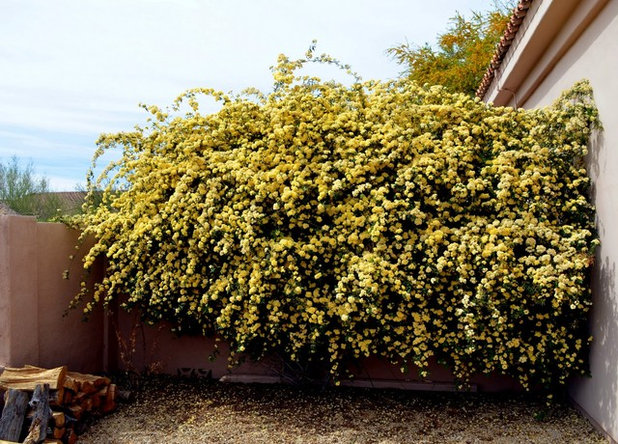
Noelle Johnson Landscape Consulting
Botanical name: Rosa banksiaeCommon name: Lady Banks’ rose
Origin: Native to China
Where it will grow: Hardy to -10 degrees Fahrenheit (USDA zone 6; find your zone)
Water requirement: Water weekly in spring and fall, twice a week in summer and two to three times a month in winter.
Light requirement: Full sun to partial shade, but avoid areas with hot, reflected sun or western exposures in the low desert
Mature size: 10 to 20 feet tall and wide when maintained; can reach heights of 50 feet when not pruned
Benefits and tolerances: Low-maintenance, disease-resistant, thornless rose that blooms in spring
When to plant: Plant from cuttings or transplants in spring or fall.
Shown: A single Lady Banks’ rosebush growing in an Arizona garden
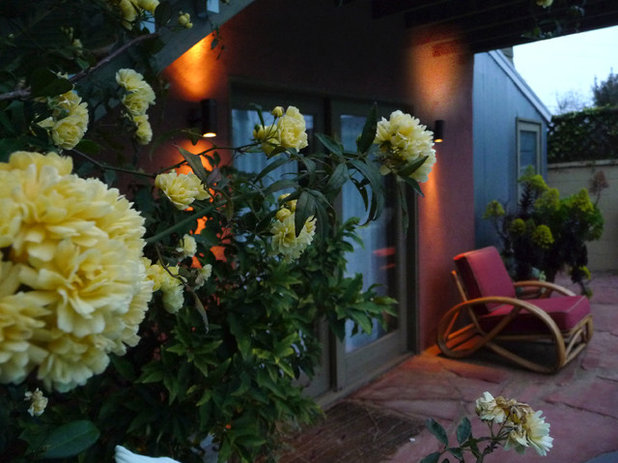
Urban Oasis
Distinguishing traits. Lady Banks’ roses are somewhat different from more modern rose species in that they are thornless, need relatively little maintenance and bloom once a year in spring.
Glossy, dark green compound leaves are made up of five to seven leaflets. When Lady Banks’ is grown in full sun, its foliage is resistant to many of the fungal diseases, such as blackspot and powdery mildew, that often affect other roses.
In the colder zones of 6 to 8, the foliage is deciduous, while in zones 9 and above, it is evergreen.
Shown: Rosa banksiae ‘Lutea’ has yellow double blossoms.

Jeff Herr Photography
Lady Banks’ is a great option for those who want roses without the fuss. Besides being relatively disease resistant, aphids tend to leave this rose alone. Deer can be a problem, however, as they do like to eat Lady Banks’ roses.
Lady Banks’ flowers once a year in spring and produces white or yellow blooms that are either single or double, depending on the variety. The flowers are rather small, reaching 1 inch in diameter. They are lightly fragrant and appear in early spring in zones 9 to 11, while blooming later in spring and into summer in cooler zones. Flowers are produced on old wood from the previous year and before, so be aware when pruning.
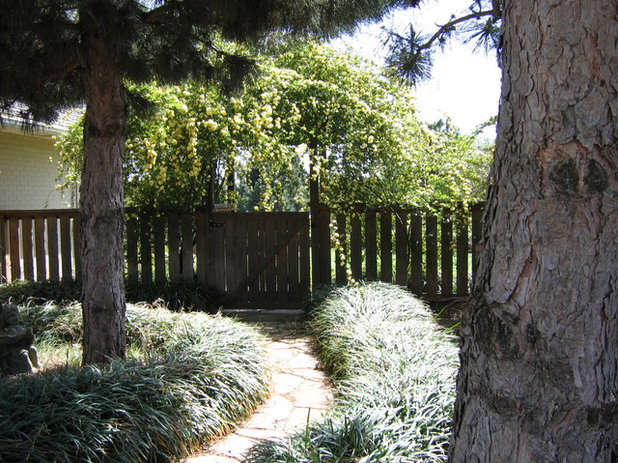
Rhonda Kieson Designs
The rose was named for the wife of the director of Kew Gardens in England in the early 1800s. Lady Banks’ rose cultivars include:
- R. banksiae ‘Lutescens’: single yellow flower
- R. banksiae ‘Lutea’: double yellow flowers
- R. banksiae var. normalis: single white flower
- R. banksiae ‘Alba Plena’: double white flower
Shown: A yellow Lady Banks’ rose arching over an arbor
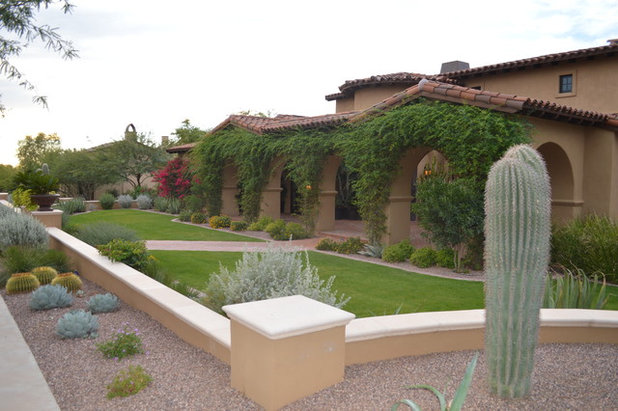
Pascale Land Design
How to use it. Canes can be trained to climb against a wall or an arbor if a trellis is provided. Lady Banks’ roses can also be allowed to grow by themselves, either singly as a large shrub or as an informal hedge. Allow plenty of room for them to grow, as they can spread to at least 20 feet.
Use Lady Banks’ to help break up a bare expanse of wall, or train it up and over archways. It looks great trained up a pillar or trellis on a porch or an entryway. Even when it’s not in flower, the attractive green foliage will add beauty to the landscape.
Shown: Lady Banks’ roses trained over archways, not in flower
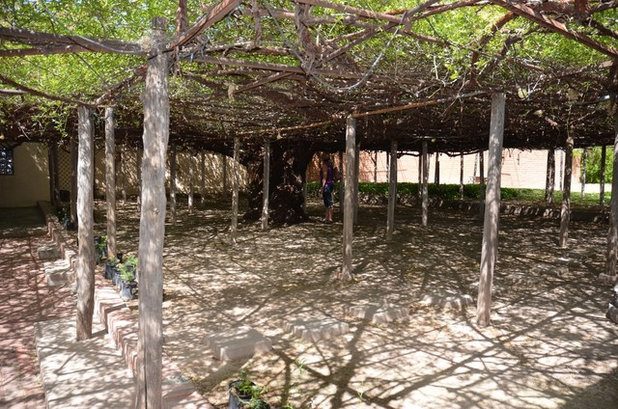
Noelle Johnson Landscape Consulting
In Tombstone, Arizona, you can find the world’s largest rosebush, which happens to be a double white flowering Lady Banks’. This rosebush is more than 9 feet tall and covers more than 8,000 square feet. Planted back in 1855, it has since grown to epic proportions. Visitors can see this famous rosebush and even buy cuttings taken from it to plant in their own gardens.
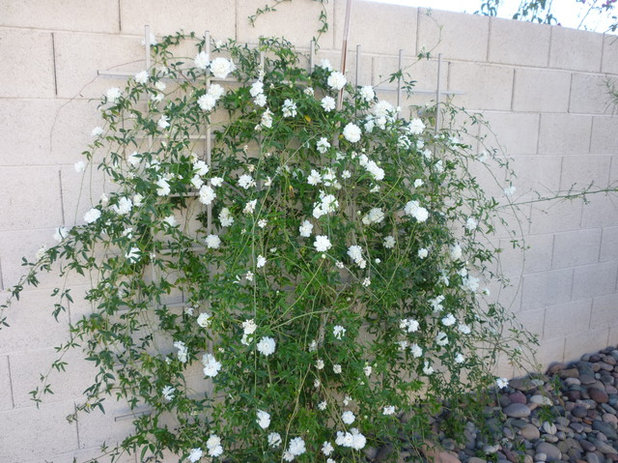
MTH Design Group
Planting notes. Plant it in full sun to filtered shade. In hot climates avoid planting in west-facing areas with hot, reflected heat; a southern or eastern exposure is best. Plant it in well-drained soil that has been enriched with compost.
For best results, apply a slow-release fertilizer or your favorite balanced, organic fertilizer in early spring in warm winter areas. For zones 6 to 8, apply fertilizer in late spring.
More: See how to grow another vigorous climbing rose





